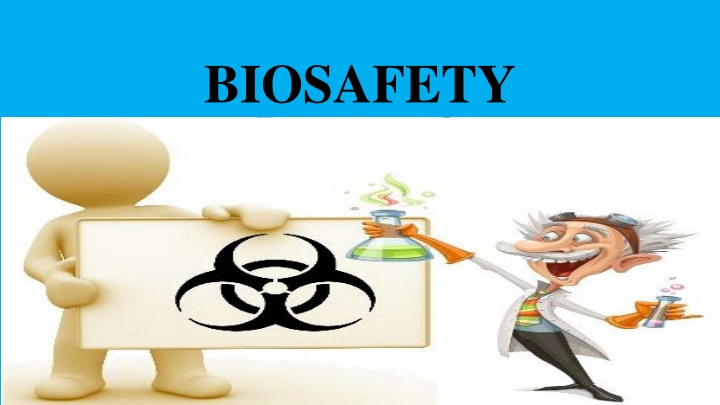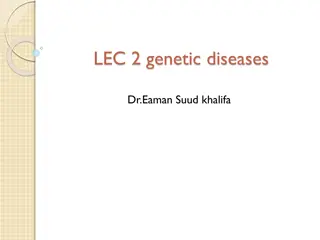
Biosafety: Risks, Regulations, and Guidelines
Explore the importance of biosafety in biotechnology, including risks to human health, environment, and agriculture. Learn about biosafety levels, major concerns, and global regulations to ensure safe practices in GMO research and applications.
Download Presentation

Please find below an Image/Link to download the presentation.
The content on the website is provided AS IS for your information and personal use only. It may not be sold, licensed, or shared on other websites without obtaining consent from the author. If you encounter any issues during the download, it is possible that the publisher has removed the file from their server.
You are allowed to download the files provided on this website for personal or commercial use, subject to the condition that they are used lawfully. All files are the property of their respective owners.
The content on the website is provided AS IS for your information and personal use only. It may not be sold, licensed, or shared on other websites without obtaining consent from the author.
E N D
Presentation Transcript
BIOSAFETY The policies and procedures invariably adapted to ensure the environmentally safe applications of biotechnology. Biosafety levels (BSL) usually refers to a classification system used to indicate the safety precautions required for those investigation microorganisms, especially viruses known to be dangerous and lethal to those exposed to them.
GREEN REVOLUTION TO GENE REVOLUTION
MAJOR CONCERNS Risks for human health Risks for environment Risks for agriculture Risks for interaction with non- target organism
Risks for human health Toxicity vs. food quality/safety Allergies Pathogens drug resistance i.e. antibiotic resistance
Risks For Environment Persistence of gene/ transgene/ transgene products Resistance of target organisms or susceptibility of non-target organisms Increased usage of chemicals in agriculture Transgene instability Unpredictable gene expressions
Risks for Agriculture Weeds or super weeds Change in nutritional values Reduction of cultivars Loss of biodiversity
Risks for interaction with non-target organism Genetic pollution via pollen or seed dispersal Horizontal gene transfer DNA uptake i.e. transfer of foreign gene to microorganisms. Generation of new line viruses by Recombinant DNA Technology
BIOSAFTEY GUIDELINES AND REGULATIONS Several countries have formulated specific biosafety guidelines with the aims: 1.To reduce the usual probability of infrequent release of GMOs. 2.To prevent and check the intentional release of such GMOs into the environment.
Worldwide committees for biosafety Some committees worldwide for biosafety are: 1.Institutional Biosafety Committee; to monitor the ongoing research activities at institutional level 2. Genetic Engineering Approval Committee; to permit the large scale applications of GMOs at commercial levels and to open the field of trials of transgenic substances i.e. agricultural, industrial and health care products.



![Lec [2] Health promotion](/thumb/274962/lec-2-health-promotion-powerpoint-ppt-presentation.jpg)
